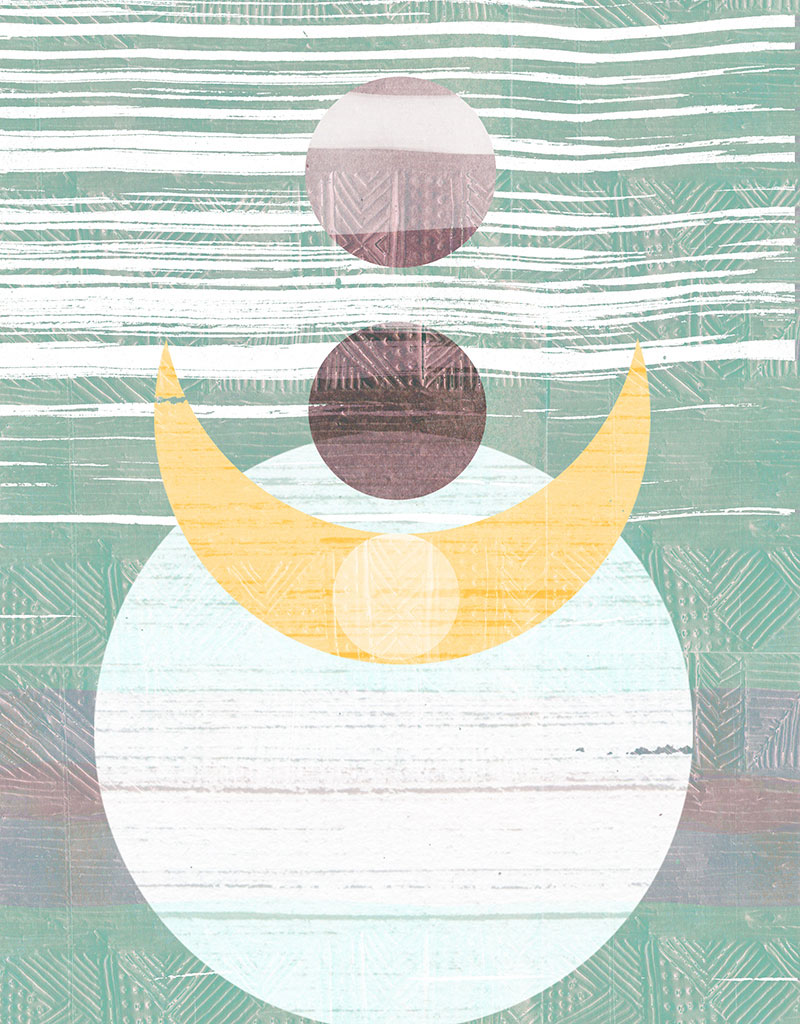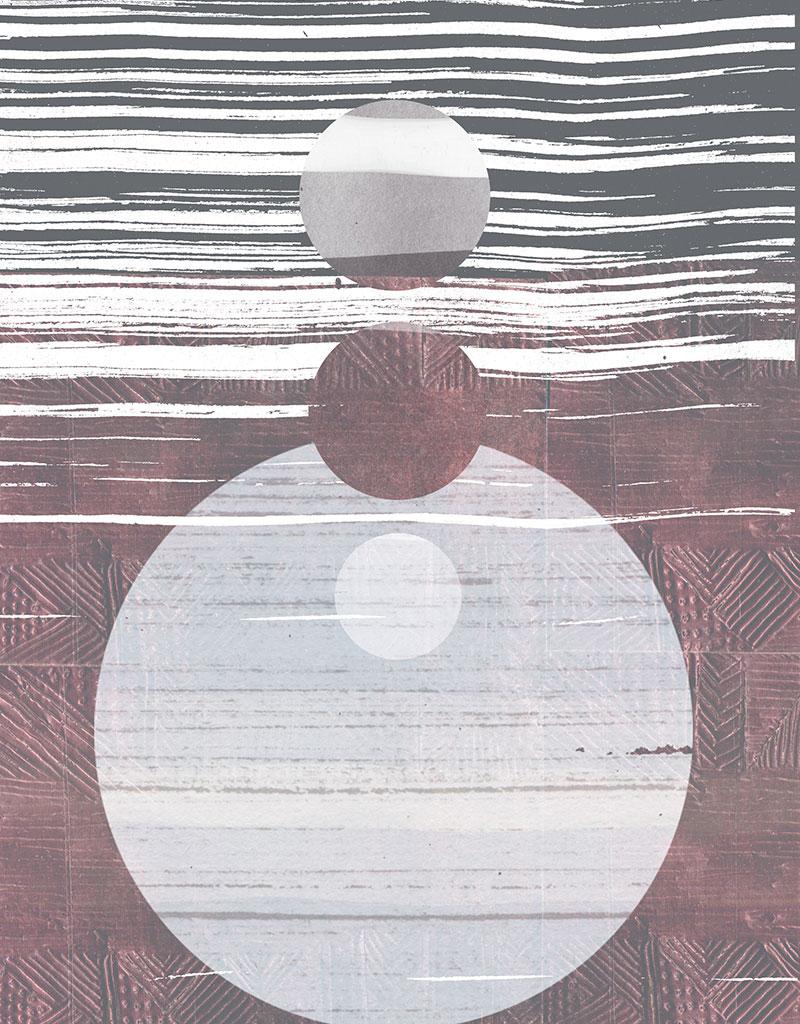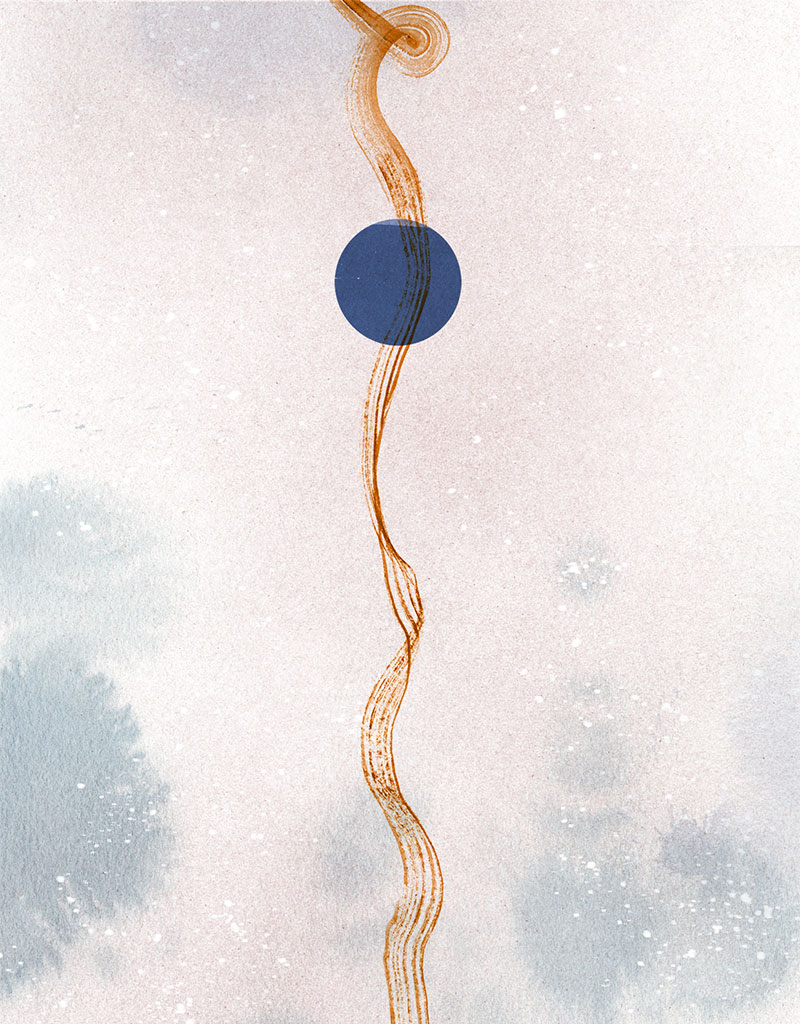Dark, rumbling clouds are an often-invoked motif of rains in the subcontinent. These shape-shifting harbingers of rain have become an integral part of the artistic vocabulary of the literature, art and music of the subcontinent
Isheeta Sharma
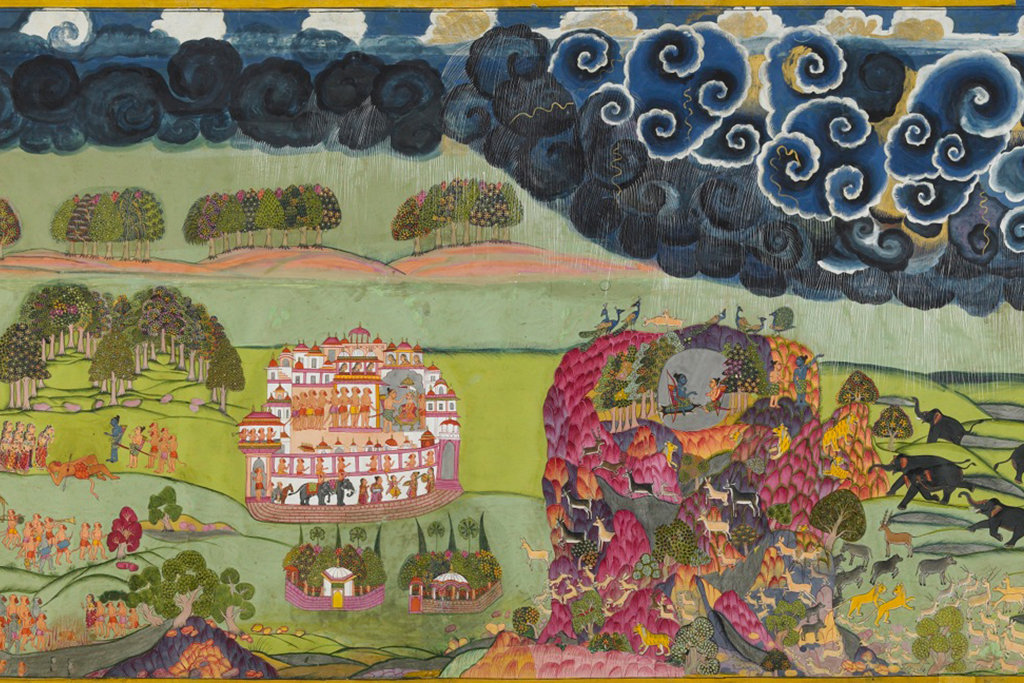
नवमासधृतंगर्भंभास्करस्यगभस्तिभिः।
पीत्वारसंसमुद्राणांद्यौःप्रसूतेरसायनम्॥
Nine months those clouds have borne the load
Conceived from sunbeams as they glowed,
And, having drunk the seas, give birth,
And drop their offspring on the earth.
The Ramayana of Valmiki
Varsha rtu, in the subcontinent, is the season of thunder and rain, the season of drama and romance. Its onset gives respite from the blazing heat of summer and invigorates the land. It is also the season of desire. And this desire has ignited the imagination of poets, artists, and musicians for ages. Perhaps one of the most often invoked symbols of rain are the dark, rumbling clouds. It is by looking at these rain-laden clouds that the Peacocks begin their delightful dance which marks the arrival of rains. In fact, these birds are also referred to as megha-nāda-anulāsī – he who dances to the sound of the clouds. These rainclouds can signify many things – they can be messengers of love, they can evoke longing for one’s lover, or they can be a sign of forthcoming abundance. Such is their significance that clouds are extensively invoked in the literature, art, music and oral traditions of the subcontinent.
Clouds have been an important part of the nomenclature of Varsha rtu. The two months of Varsha rtu, known as Shravana and Bhadrapada, were traditionally known as Nabhas and Nabhasya. Both the names refer to misty clouds.
As shape shifting beings, clouds, the augury of rain, have been accorded high status in traditional literature. In many texts they are seen as chariots on which celestial beings, such as Vidyadharas (air spirits) and Gandharvas (celestial performers), float upon. The Amarkosha, a Sanskrit thesaurus, gives 15 different names for clouds - Abram, Meghah, Vaarivaahah, Stanayitnuh, Bhalaahakah, Dhaaraadharah, Jaladharah, Thadithwaan, Vaaaridah, Ambhubrth, Ganah, Jiimutah, Mudirah, Jalamuga, and Dhuumayonih. Even as these names stand for clouds, they carry different meanings. Vaarivaahah, for example, is a masculine bearer of water. Mudirah on the other hand, is a name for clouds but also for a lover.
In Rig Veda we read of Parjanya - a personification of the dark clouds as the deity of rain. Today we see Indra as the king of the gods and the sky, who wields thunder and lightning. However, in the Vedic world Parjanya was a separate deity who ruled and dwelled in the clouds. A hymn in the Rig Veda for Parjanya reads: “When thou, with thunder and with roar, Parjanya, smitest sinners down, This universe exults thereat, yea, all that is upon the earth.” (Rig Veda 5.83) Parjanya is the loud, roaring bull that brings life to earth. So ferocious that he can strike down trees, but he also moistens the earth, rejuvenating it and bringing forth life.
This personification of rain clouds as mighty deities can be seen in other cultures as well. In his book Songs of the Russian People, author WRS Ralston writes that Perun, the Thunderer - a major deity of the Slavonians has been identified with the Vedic Parjanya by Russian mythologists through a similarity in their descriptions.
While as Parjanya the rainclouds are like the bull, in Mṛcchakaṭikā, a Sanskrit drama, they are seen as trumpeting elephants. “Like elephants these clouds, streaming rain, bound about their girths with chains of lightning and charging against each other, seem to be uprooting the earth on Indra’s orders with silvery ropes.” In the painting titled Death of Vali depicting a scene from Ramayana we see trumpeting elephants charging much like the dark blue rain clouds gathered above them.
The clouds also set the stage for romance and drama. In Kalidasa’s famous work Meghadutam, an exiled Yaksha is trying to convince a passing cloud to take a message to his beloved. He tells the cloud, “O great cloud, as the giver of water you are like a balm for those burning with love.” This romantic charm of rumbling clouds has been incorporated into the popular vocabulary of not just literature but also music.
The songs of the genre of Barahmasa translated as ‘twelve months’ are what Francesca Orsini, in her work Clouds, Cuckoos and an Empty Bed: Emotions in Hindi-Urdu Barahmasa, describes as “originally a women’s song genre… it employs the voice of the virahini, a woman longing for her absent husband/beloved”. In the Barahmasi songs which describethe season of, the thundering clouds torment the woman who is longing for her beloved. The virahini sees the clouds as an army come to attack her. In another genre of music known as Thumris a similar theme can be found. In Thumri it is known as biraha which translates as that estrangement specific to lovers, infused with longing. Very often this sweet pain of estrangement is celebrated in this genre. Dark clouds which mark the arrival of rains often become the perfect excuse for the woman to convince her lover to stay. At other times, she uses the sound of thunder as a pretext to seek shelter in the arms of her lover.
The dramatic unfolding of Varsha rtu has inspired 36 ragas classified as Raga Malhar in Hindustani classical music. One of these ragas is Megh (cloud) Malhar. It is sung as an invitation to the rains. Songs sung in this raga can often talk of the movements of the clouds in the sky, the rumbling which announces their arrival, the crackle of thunder that falls from the mand the sound of the rain as they release water.
Megh Malhar is also a legendary raga because of its association with Tansen. Considered one of the best classical singer of all times, Tansen was a singer in the court of Emperor Akbar. One day he was asked to sing Raga Deepak, a powerful raga associated with the energy of agni, by jealous courtiers. When sung correctly Raga Deepak is so powerful that it can light up diyas but also heat the body of the singer himself. Tansen knew of this possibility, and so did the jealous courtiers. Tansen’s singing was so evocative that soon enough the lamps in the court lit up but even Tansen’s body started to heat up. Fortunately, he had prepared for such an outcome. Two singers – Tana and Riri – were present in the court, instructed by Tansen to sing Raga Megh Malhar as soon as the lamps light up. When Tana and Riri started singing Raga Megh Malhar, the rainclouds arrived drenching the land in a cool shower.
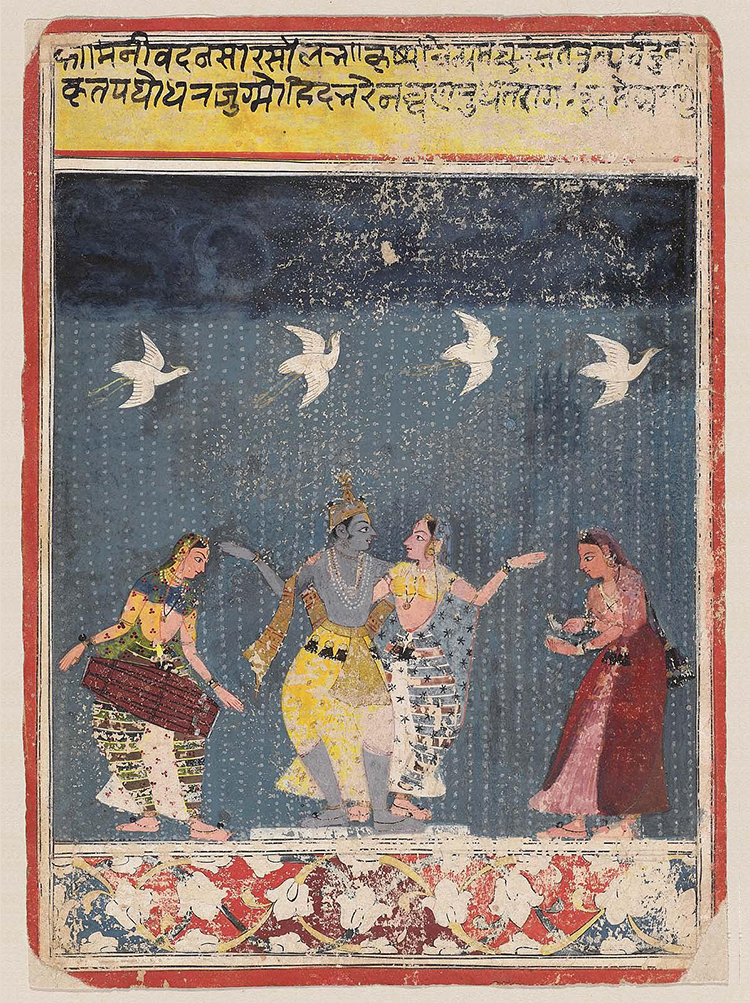
Megha Raga. Central Indian. Circa 1655–60. Opaque watercolor and gold
on paper. Gift of John Goelet to Museum of Fine Arts Boston
Raga Megh Malhar is sung as an invitation to the rains. Songs sung in this raga can often talk of the movements of the clouds in the sky, the rumbling which announces their arrival, the crackle of thunder that falls from them and the sound of the rain as they release water
Clouds are present in folklores from different parts of the country. In Rajasthani folklore, for example, different formations of clouds are seen as stages of pregnancy which give birth to the rainy season. In another folklore, popular in many regions of the subcontinent, the clouds are a battlefield where the demon Vritra (envisioned as drought) is slain by Indra. It is Vritra’s death which allows for the monsoon to begin.
In tribal traditions clouds are invoked to bring forth rain. A popular ritual for the members of the Ho tribe is to carry a canopy of smoke created by burning sticks across villages. The smoke represents dark clouds and is an invitation for the actual clouds to arrive. The Munda tribe practices a similar ritual where the rumbling sound of the clouds is recreated by throwing stones off a hill in an attempt to persuade the clouds to come to them.
Rain-laden clouds have a rich history in the literature, art, music and oral traditions that celebrate Varsha rtu in the subcontinent. As harbingers of the most dramatic and romantic season of the subcontinent and as the carriers of life-giving water their importance is emphasized. While their arrival gladdens the hearts and minds of all those waiting for the scorching heat of the summer to end with the cool relief of water, they can also evoke bittersweet longing in the hearts of separated lovers.

